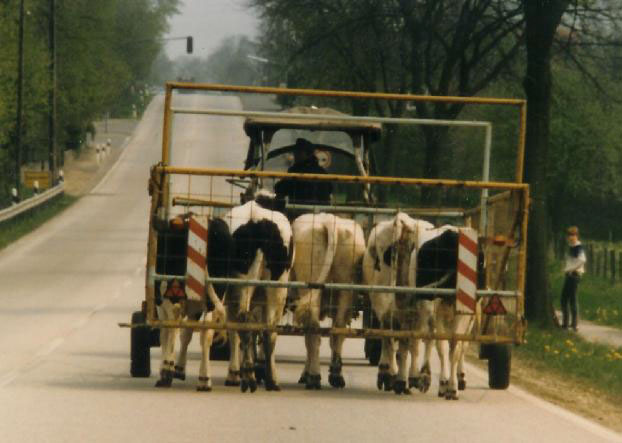(“I came to the third day resolving not to play the game on his terms.”)
I can get really tired of rhetorical spin. I have FaceBook “friends” who, in order to hammer home their political point of view, will cherry pick a statement from someone espousing an opinion which opposes their own. Out of context the chosen phrases are usually indefensible, and once they’ve been forwarded and shared enough times, anything like their original meaning is long lost. All the better to further the aims of their critics.
Ax-grinding equestrian writers are equally culpable, so I hesitate to say what follows. A harmless cliché like “Think outside the box” gets twisted to demean anyone who might find the concept of creating a “box” with your aids to be useful. Going one step further, I encounter writers of the fetlock-hugging ilk who claim that to even use such terminology—whether the horse is inside it or your creative solution lies beyond it– to define your relationship with a horse is to rob him of his spiritual essence. Presumably only a trainer dwelling in the Neanderthal past would deny a horse the freedom to explore his potential as your co-equal. And lacking this, you and your horse will never achieve true harmony. . . .
All because you have been co-opted by materialism and ego-driven false values.
Whew—I am just so “Om”ed out. For me, there is clearly no hope!
But let me revisit a recent blog in which I spoke of a “do what works” solution to finding riding harmony. In the process I’ll get back to that box.
We live in a world of physical limits. A budget is a limit. A job which demands attendance at specified hours imposes limits. We (more or less) adhere to speed limits. Gravity limits our ability to jump. The ground limits our ability to fall. A meditation (or peyote)-induced raised consciousness may let you transcend these limits in special circumstances, but eventually most of us come back to earth. And we look for ways to make our humble existence as comfortable as possible till our personal meteor flames out to a cinder.
For your consideration: an old horse who has every intention of challenging for The Stiffest Jaw Ever title. He’s not a fan of bending; he claims to be impervious to softening and tries at every opportunity to adamantly lock his left side against the bit.
In his owner’s absence, I rode this horse for three days. His regular trainer speaks often of how difficult and heavy the horse is (and proved it to me with a demonstration of their joint wrestling prowess). Indeed, on Day One that’s exactly how I found him. He could be light for moments, but when he grabbed the bit, it was as they say, “Katie, bar the door!”
After a day of enduring this misery and a day of muddling around seeking alternate solutions, I came to the third day resolving not to play the game on his terms.
At right is a photo from Dressage Unscrambled. Taken in Germany, it’s a mobile bottomless pen used by a farmer to move his cows from one field to another. In essence, it forms a box around the cows. No dummies those cows – after once or twice being nudged by the moving metal fence, they learn to stay centered within the box, moving willingly along in the space it defines.
it’s a mobile bottomless pen used by a farmer to move his cows from one field to another. In essence, it forms a box around the cows. No dummies those cows – after once or twice being nudged by the moving metal fence, they learn to stay centered within the box, moving willingly along in the space it defines.
Two things had become apparent about the horse I was riding. Because he was very reactive to the leg, he would run forward against the front of the box, lean on it, and make himself rigid. And any application of strength used to prevent that from happening only played into his expectations and made him worse.
So, number one, I vowed to keep the horse exactly centered in my box of the aids. And number two, no matter how unsightly my hand position would be, no matter how high the horse’s head would get, no matter how long it would take, I was going to employ only the lightest of rein aids to accomplish that first goal.
A stranger spying one would only shake his head at the spectacle of this totally inverted horse being ridden slowly with my hands at eyebrow height or higher. But by going up there and playing on the corners of the horse’s mouth, I was able to break the cycle of his bracing.
Prior to this, he could execute a turn on the haunches but only at the expense of leaning heavily against the outside rein. Having temporarily abandoned the need to keep him round, and by using only the smallest and briefest of rein interruptions, I persuaded him to move his shoulders laterally without constraint and without him getting heavy.
In so doing, he was able to understand the regulating effect of my torso and body language, in other words, half halts which weren’t hand – based. Suddenly I had a surprisingly maneuverable, pliable horse to ride!
So what’s the point of all this? License to ride around with your hands up in the air? A chance for me to say, “I’m a professional. Don’t try this at home!”? No, it’s a case of thinking outside the box to help your horse stay more constructively inside the box. As far as I am concerned, if this kind of “boxing” makes him softer, more comfortable, and produces a pleasing harmony, who should complain?
